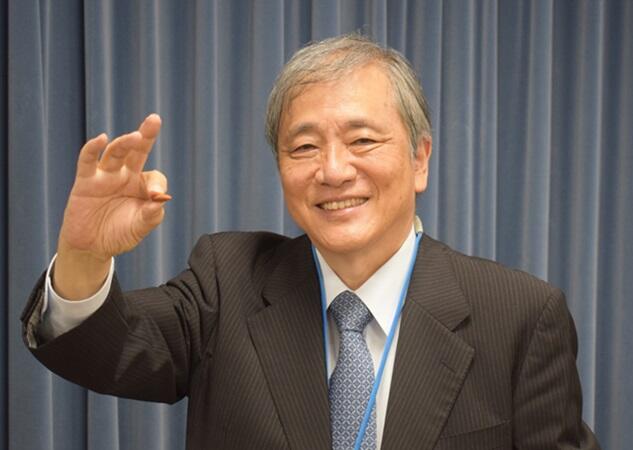Light element nuclei are spherical, while heavy nuclei are rugby ball-shaped. This has been the established theory for 70 years and is written in textbooks, but it has now been revealed that they actually have a shape like an almond - a flattened rugby ball. A joint research group led by Visiting Chief Scientist Takaharu Otsuka at the RIKEN Nishina Center for Accelerator-Based Science (Professor Emeritus of the University of Tokyo), Project Researcher Yusuke Tsunoda at the Center for Nuclear Study, Graduate School of Science, the University of Tokyo, and Associate Professor Noritaka Shimizu at the Center for Computational Sciences, the University of Tsukuba has presented a new theoretical framework for nuclear shape and rotation based on quantum theory, overturning the established theory.
The theory proposed by Bohr in the 1950s states that strongly deformed nuclei undergo axially symmetric deformation, as if they were rugby balls. However, while this theory can explain cases with one-stage excitation energy, it requires various assumptions for cases with two or more stages and could not provide a clean explanation.
In this study, the joint research group theoretically demonstrated that many nuclei that are significantly deformed from spherical to ellipsoidal shapes are deformed not axially symmetric, but with triaxial asymmetry.
First, the group discovered two new mechanisms by which nuclei deform with triaxial asymmetry. Nuclei generally exist in a vacuum and are symmetrical in all directions, but when the surface shape deforms from spherical to elliptical, this symmetry is broken. The broken symmetry needs to be restored, and elliptical states oriented in various directions are superposed with weights, the value of which varies according to orientation in patterns corresponding to the spin of quantum states. The group theoretically demonstrated that the effect of the quantum theoretical restoration of the rotational symmetry lost due to this triaxial asymmetry, plus the effects of components such as tensor forces within nuclear forces, leads to an increase in binding energy increases compared with axially symmetric deformation, making triaxial asymmetry more stable.
To confirm whether these mechanisms actually occur, they executed simulations based on the new theory using the supercomputer Fugaku and calculated various observable physical quantities for a large number of nuclei. For example, they found that the intensity at which electromagnetic excitation occurs changes in correlation with the degree of triaxial asymmetric deformation of nuclei, and the simulation results matched well with previous experimental values. It was also confirmed that such deformation occurs in nuclei with mass numbers of 120 or higher and that the degree of deformation increases the further the nuclei deviate from magic numbers.
Otsuka commented: "Axially symmetric deformation was well explained by the science of 70 years ago, and everyone believed it because the picture was beautiful and simple, so it was written in textbooks. When I started saying that what had been believed for 70 years was wrong, some people initially said I must be mistaken. More than half a century ago, Ukrainian theoretical physicist Dr. Davydov also advocated triaxial asymmetric deformation, but it was not accepted because his other theories were insufficient. American experimental physicist Dr. Cline also obtained data showing triaxial asymmetric deformation. How much evidence really exists for what scientists believe now? Is what we have in our hands really the truth? I think that sometimes, we need the mindset and depth of character to occasionally review these things."

Journal Information
Publication: The European Physical Journal A
Title: Prevailing triaxial shapes in atomic nuclei and a quantum theory of rotation of composite objects
DOI: 10.1140/epja/s10050-025-01553-1
This article has been translated by JST with permission from The Science News Ltd. (https://sci-news.co.jp/). Unauthorized reproduction of the article and photographs is prohibited.




